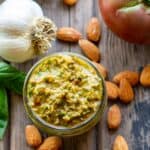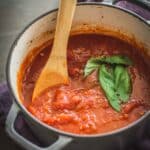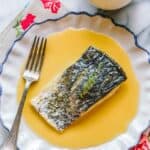How to Make Beurre Blanc
This simple Beurre Blanc recipe is a classic French butter sauce made with only 3 ingredients and a simple, foolproof technique. Pair this rich white wine butter sauce with fish, seafood, chicken and vegetables.
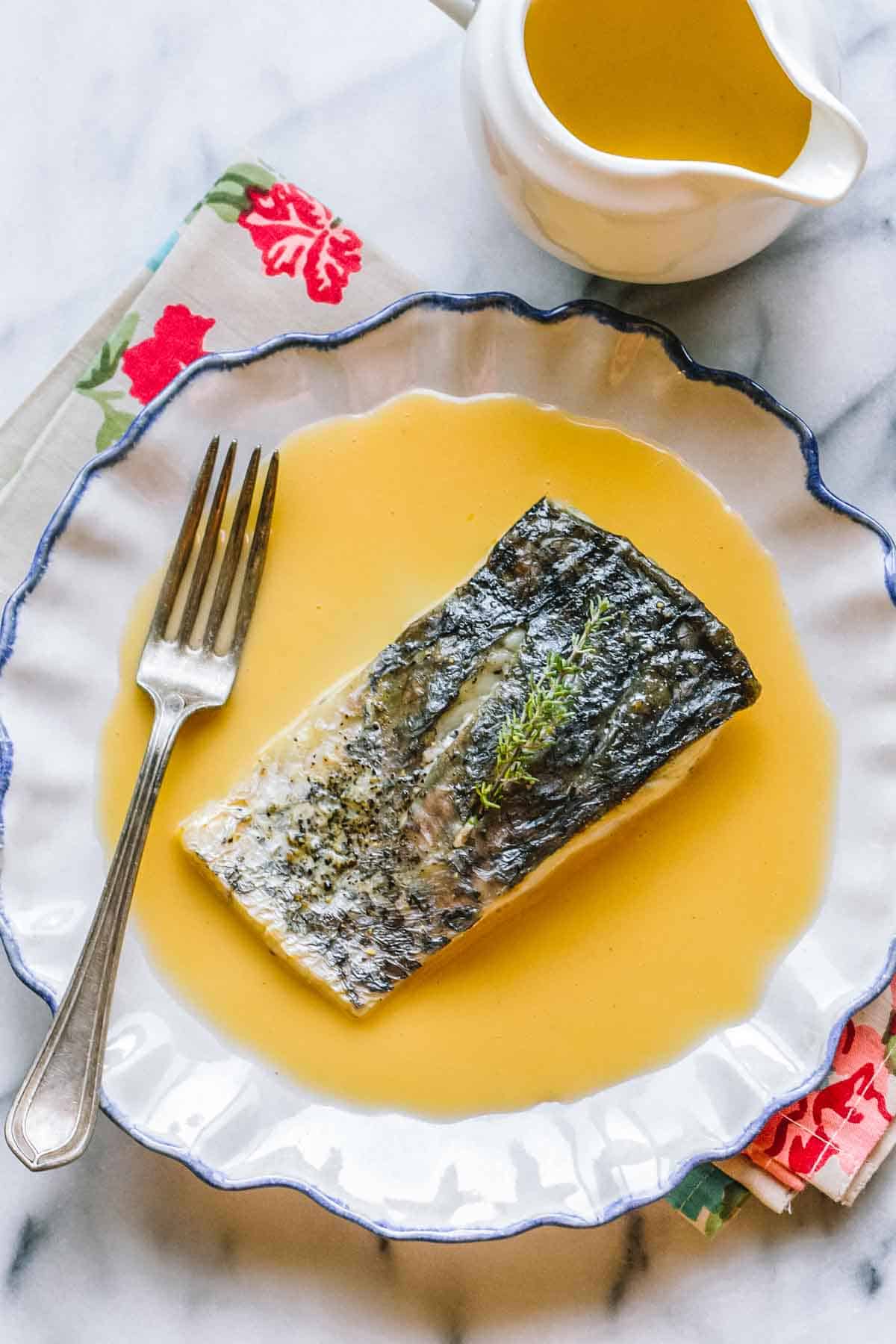
I learned how to make beurre blanc in culinary school, but spent years perfecting the technique when I worked as a private chef and prepared it for countless dinner parties.
This post may contain affiliate links.
Like other French sauces, beurre blanc has a reputation of being fussy and difficult to make, but it doesn’t have to be. There are a few tricks to getting it right and I’m going to let you in on all my secrets.
The key to a great beurre blanc is ensuring the sauce gets, and stays, emulsified.
Keep reading for my best tips and tricks to making a silky, buttery, lemony beurre blanc just like a master French chef.
What is Beurre Blanc?
Beurre Blanc is a classic French sauce that simply means white butter in English. I learned how to make it in culinary school, but you don't have to be Julia Child or a professional chef to master this classic sauce.
There are many different ways to make this rich butter sauce, but this is the simplest, most basic recipe that relies on just three ingredients and proper technique.
Some chefs add heavy cream, olive oil, white vinegar or lemon juice to their basic beurre blanc, but it's just not necessary. Just follow my tips to create a perfectly smooth, great sauce that doesn't separate.
In classic French cuisine, beurre blanc is typically served with fish and seafood, but this buttery white wine sauce is great with poultry and vegetables, too.
For other classic French recipes, try my Oeufs au Plat Bressanne, Dauphinoise Potatoes, Celery Root Remoulade or Flounder Meuniere.
Why We Love This Beurre Blanc Recipe
- Only 3 ingredients.
- Super buttery but with balanced acidity.
- Versatile: Serve it with fish, shellfish, poultry, or vegetables.
- A simple and straightforward technique prevents the sauce from breaking.
Beurre Blanc Sauce Ingredients
- Butter - Butter is the main ingredient in this sauce so make sure you use unsalted butter so you can control the seasoning. COLD butter is key. Cut it into cubes and keep it refrigerated until right before adding it.
- Wine - Choose a dry white wine and avoid heavily oaked or sweet varieties. Cheap wine is fine, just make sure it's fresh and hasn't been open for more than a few days or it will develop an off-flavor.
- Shallots - Shallots are traditional in this recipe and are preferred over onions because they pack more of a punch.
- Salt and Pepper - Use kosher salt or sea salt and white pepper for the best flavor. You can also use black pepper, but it will give the sauce a speckled appearance. White pepper is used because it blends in with the sauce and creates a smooth appearance.
*Full ingredient list with quantities is in the recipe card.
Helpful Equipment
- Fine mesh strainer or fine sieve - If you want to serve your sauce with a more rustic presentation, you can skip the strainer. But, for a completely smooth and creamy sauce, running it through a strainer is essential to remove any lumps or bits of shallot that remain.
- Whisk - You will need a whisk to properly incorporate the cubes of butter into the sauce.
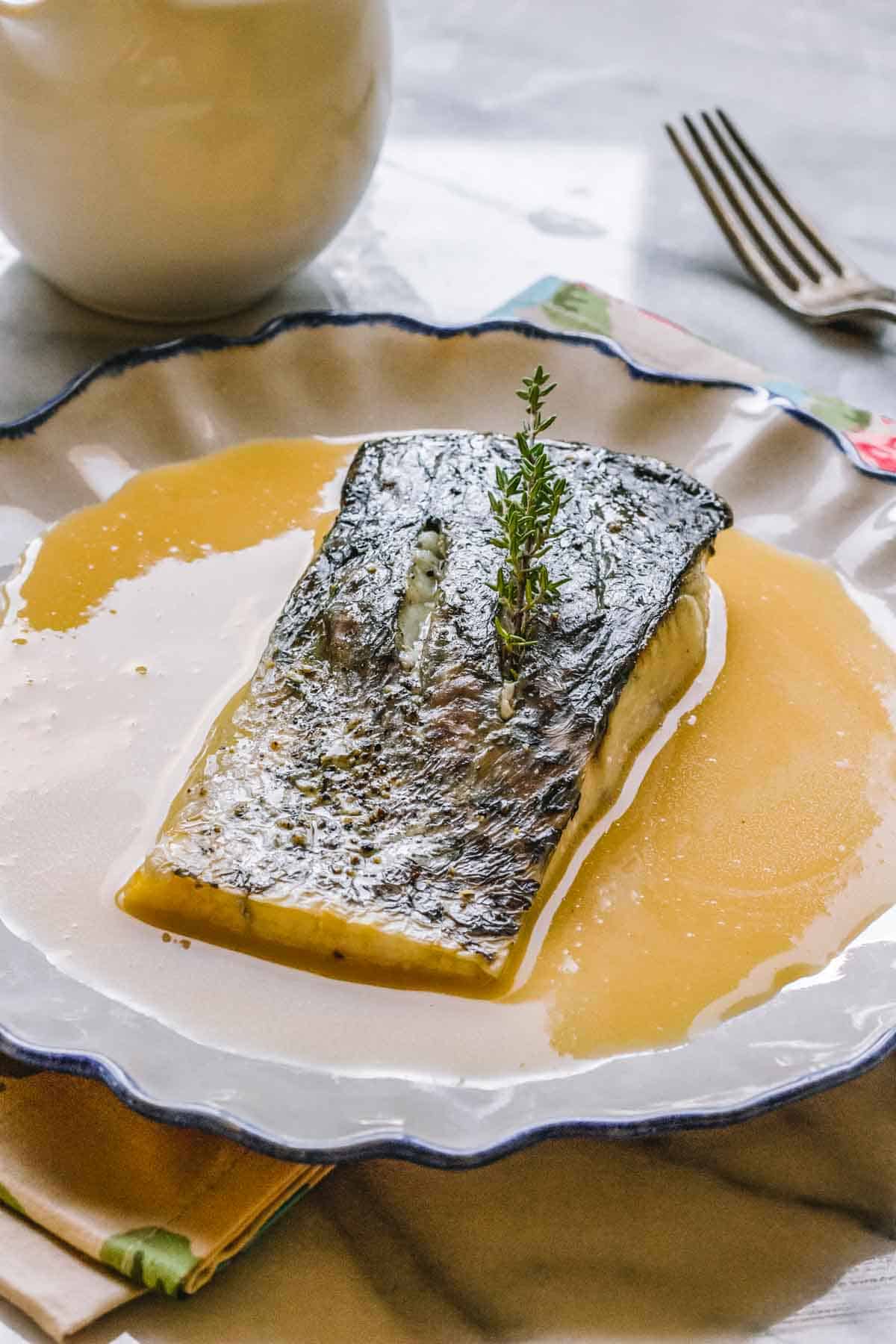
How to Make Beurre Blanc
- Add the shallot and white wine to a small saucepan and bring up to a boil over medium to high heat. Simmer until the liquid reduces until nearly dry, or "au sec" in French. There should be about to 2 tablespoons left.
- Turn off the heat, then whisk in cold butter, one piece at a time, making sure each piece is fully melted before adding the next. In French, this is called "monter au beurre," and means to mount with butter.
- If the pan gets too cool to melt the butter, warm it back up gently over low heat, but then promptly turn it off to control the temperature. Be careful not to let the sauce boil or get too hot or it will cause the sauce to break.
- Once all the butter has been incorporated, taste the sauce and season it with salt and white pepper.
- Pour the sauce through a fine mesh strainer or sieve, pressing on the shallots to extract every last bit of buttery goodness. You can skip the straining for a more rustic sauce if you prefer.
- Serve the beurre blanc immediately with fish, seafood, chicken or vegetables.
Beurre Blanc Sauce Recipe Tips
- Cold butter is KEY to a smooth and creamy sauce. Before starting the recipe, break the butter up into small pieces and keep it in the refrigerator until ready to use. This way, you can easily add just a small amount at a time so it doesn’t break the sauce.
- If the pan is too hot, the sauce could break. It’s important to remove the pan from the heat while stirring in the butter, and only gently reheat it if it becomes too cold to melt the additional butter.
- Serve your French butter sauce as soon as it’s done. It can break if it sits for too long and does not store or reheat well.
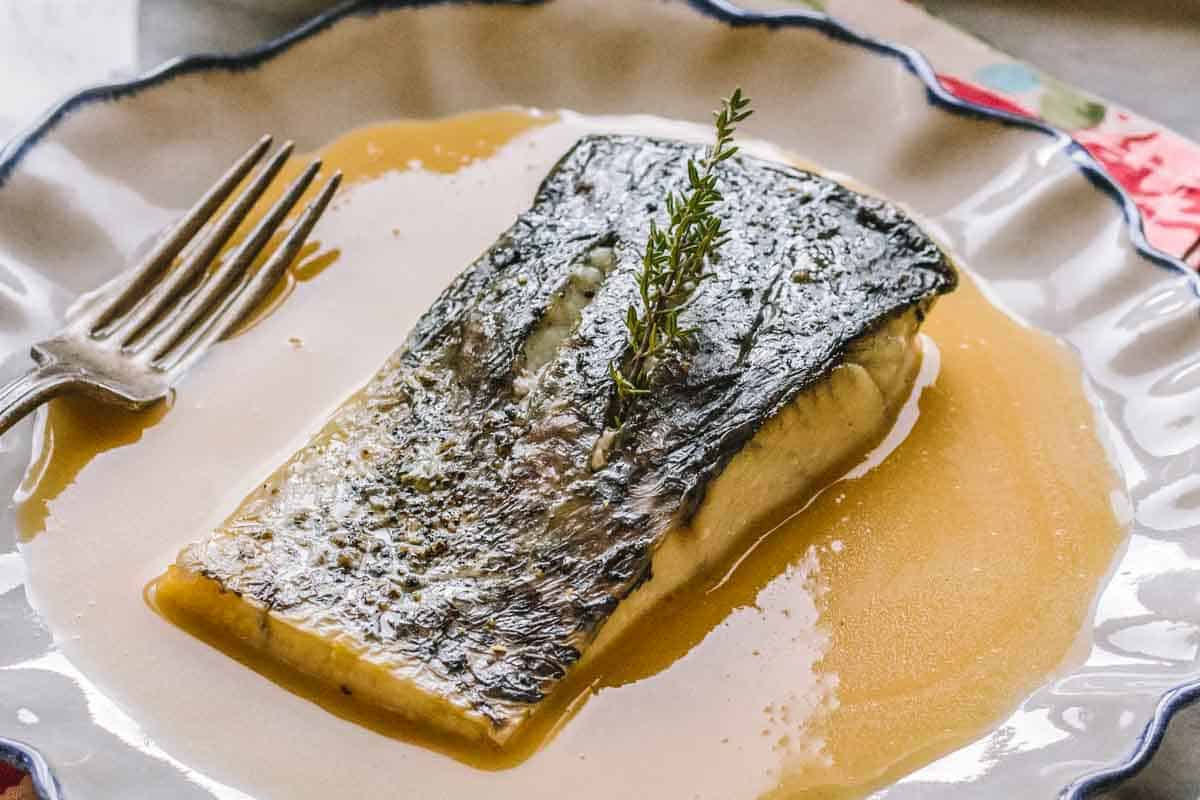
Variations
- While beurre blanc is not one of the mother sauces, it's extremely versatile and customizable and can be riffed on to create a number of different variations, like this pomegranate beurre blanc.
- Add a little heavy cream to make beurre nantais, your you can swap out the white wine for red wine to make a beurre rouge sauce instead. Or try a combination of white wine and red wine as the base liquid for something really unique.
- Try infusing the reduction of white wine and shallots with some fresh herbs, like thyme, tarragon or bay leaf.
- You can also add a splash of white wine vinegar or a squeeze of lemon or citrus juice at the end to make it extra zippy.
Serving Suggestions
My favorite way to enjoy this sauce is generously drizzled over a delicate white fish, like this roasted fish, or delicate shellfish like pan seared scallops or grilled shrimp. It pairs wonderfully with a number of dishes, like jumbo lump crab cakes and cedar planked salmon.
FAQ
This sauce will break and separate into melted butter when reheated, so I do not recommend storing it or reheating. Make it fresh right before serving for best results.
When making the reduction in the first step, use a quality dry and unoaked white wine like chablis, sauvignon blanc, or chardonnay.
This can happen if the butter is not cold enough, if you add too much butter at once, if you don’t whisk quickly enough, or if you allow the pan to get too hot. Even though it seems temperamental, just keep an eye on these four things to avoid a broken sauce.
Related Recipes
Did you LOVE this recipe? Please leave a star ⭐️ rating and comment!
Want to Save This Recipe?
Enter your email & I'll send it to your inbox.
By submitting this form, you consent to receive emails from Coley Cooks.
Beurre Blanc Sauce Recipe
Ingredients
- 1 large shallot finely chopped (about ⅓ cup)
- 1 cup dry white wine
- 8 tablespoons butter cold, cut into small pieces
- salt and white pepper to taste
Instructions
- Add the shallot and white wine to a small saucepan and bring up to a boil. Simmer until the liquid has reduced to about 2 tablespoons. Remove the pan from the heat and begin whisking in the butter, one piece at a time, being sure not to add a new piece of butter until the first one has been fully incorporated.
- If the pan gets too cool to melt the butter, you can turn the heat on to low every so often to gently warm it back up. Be careful not to let the sauce boil to get too hot as it can cause the sauce to break.
- Once all the butter has been incorporated, taste the sauce and season it with salt and white pepper. Pour the sauce through a fine mesh strainer, pressing on the shallots to extract every last bit. Straining the sauce may be skipped for a more rustic presentation.
- Serve the beurre blanc immediately with poultry, seafood or vegetables. This sauce will not reheat well.
Notes
- Cold butter is KEY to a smooth and creamy sauce. Before starting the recipe, break the butter up into small pieces and keep it in the refrigerator until ready to use. This way, you can easily add just a small amount at a time so it doesn’t break the sauce.
- If the pan is too hot, the sauce could break. It’s important to remove the pan from the heat while stirring in the butter, and only gently reheat it if it becomes too cold to melt the additional butter.
- Serve your French butter sauce as soon as it’s done. It can break if it sits for too long and does not store or reheat well.
- This is a very basic recipe and can be adjusted to suit a variety of flavors. Experiment with different herbs and spices in the reduction, or by swapping out some of the white wine for a different liquid, such as a fruit juice.

